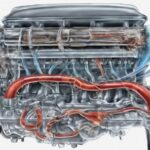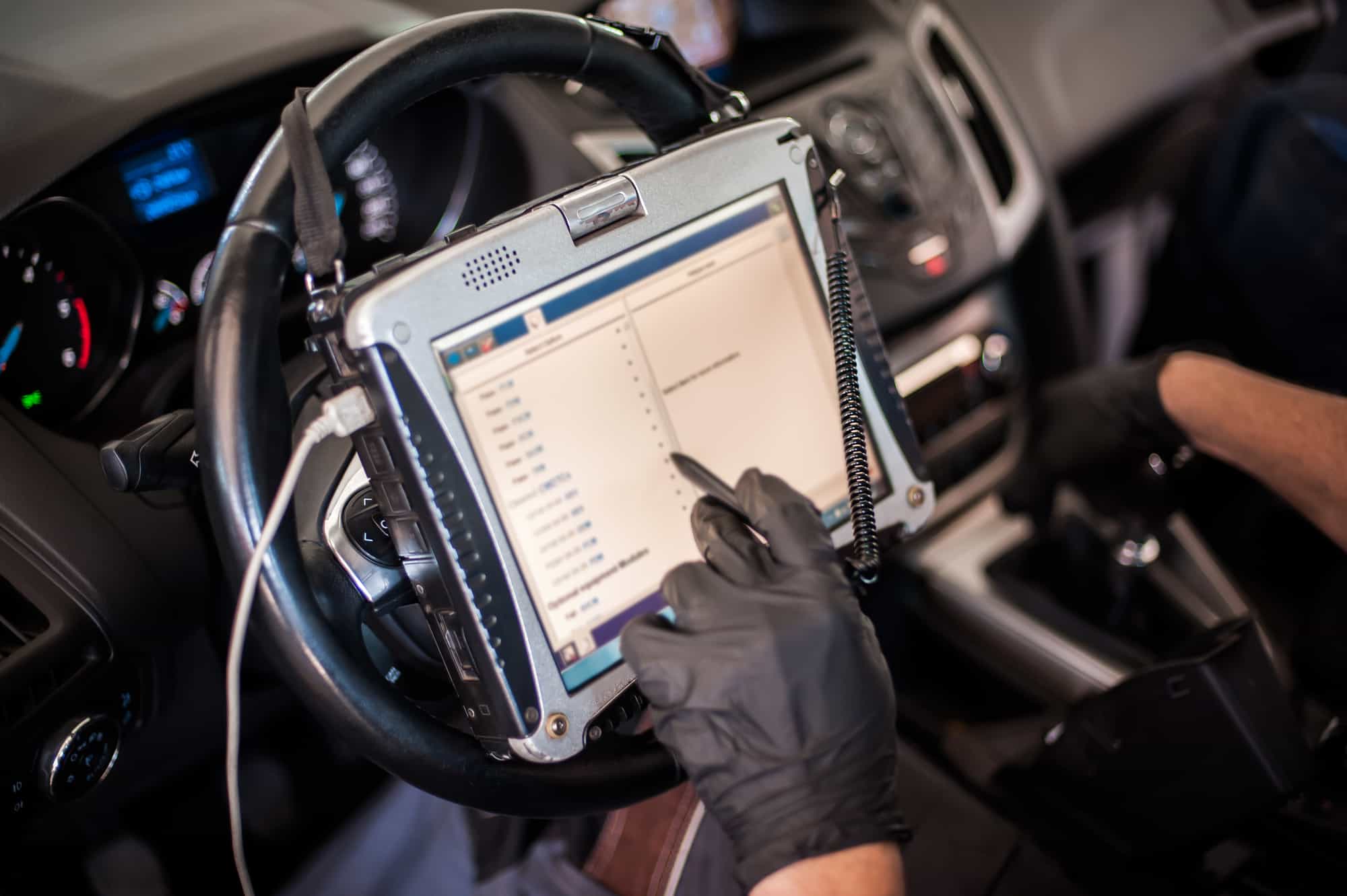The check engine light is part of the onboard diagnostics system in your car, and it turns on when the ECU detects a problem with the engine, the emissions system or one of the many other electrical systems in your car.
One common question that many drivers have is whether the check engine light will come back on after it’s been reset.
The answer to this question depends on several factors, including the underlying issue that triggered the light in the first place, how the issue was resolved, and how the vehicle is driven.
When a check engine light comes on it could indicate a minor issue or a significant problem that needs immediate attention. In some cases, the light may come on due to a temporary glitch in the system, and it may disappear on its own.
In this article, we’ll explore some of the common reasons why the check engine light may come back on after being reset, what to do if the light keeps coming back on.
Will the Check Engine Light Come Back On After Reset?
When the check engine light comes on, it indicates that there is a problem with the vehicle’s engine or emission control system. Many car owners choose to reset the check engine light in the hope that the issue was just a minor glitch. However, the question remains: will the check engine light come back on after reset?
Resetting the check engine light may temporarily turn off the warning indicator. However, it’s important to understand that if the underlying problem still exists, the light will likely come back on. When you reset the vehicle’s computer, it clears the stored diagnostic trouble codes (DTCs).
As you continue driving, the computer reevaluates the vehicle’s systems and performs tests to detect any recurring issues. If the problem persists, the check engine light will illuminate again to alert you of the ongoing problem that needs attention.
Depending on the issue with the engine, it could take a few minutes, after driving for about fifty miles or so for the check engine light to come back on after reset, or it could take a few days for the light on the dashboard to come back on.
What to Do if the Check Engine Light Comes Back On
If the check engine light comes back on after resetting it, it is advisable to take the vehicle to a professional mechanic or dealership for a diagnostic test. The mechanic will use an OBD-II scanner to read the trouble code and determine the underlying issue. The OBD-II scanner can also identify issues that may not trigger the check engine light immediately.
Some problems with the engine may not trigger the check engine light immediately. For instance, a loose fuel cap may not cause the check engine light to come on immediately.
However, if the fuel cap remains loose, it could trigger the check engine light after a few days. Similarly, issues with the engine control unit (ECU), such as a failing battery or a bad battery cell, may not trigger the check engine light immediately.
Here are some other issues that may not trigger a check engine light immediately:
| Issue | Description of Issue | Time Before Light Comes On |
|---|---|---|
| Gradual deterioration of engine components | Components or systems experiencing gradual wear or deterioration | Varies; not until the issue becomes consistent |
| Minor vacuum or exhaust leaks | Small leaks or issues in the vacuum or exhaust system | Varies; when the issue worsens or starts to cause engine misfires |
| Emission control system problems | Malfunctions in emission control components/systems | After multiple drive cycles or consistent issue detected |
| Sensor faults | Faulty or failing sensors providing sporadic or intermittent readings | When the sensor readings are consistently incorrect |
| Pending diagnostic trouble codes (DTCs) | Potential issues detected but not yet confirmed as recurring | When the codes persist beyond a few driving cycles |
Will Reseting the Check Engine Light Also Fix Other Dashboard Light Issues?
Resetting the check engine light may not necessarily fix other dashboard light issues. Understanding car dashboard lights is crucial as each light represents a different problem. It’s best to address the specific issue causing the dashboard light to illuminate rather than relying solely on resetting the check engine light.
Why Does the Check Engine Light Sometimes Come Back On?
One reason why the check engine light may come back on is if the underlying problem that initially triggered the light has not been fully resolved. Resetting the check engine light clears the stored diagnostic trouble codes (DTCs), but it doesn’t fix the underlying issue. Once the vehicle’s computer detects the problem again during subsequent tests or driving cycles, it will illuminate the check engine light.
Another reason why the check engine light may come back on is if certain components or sensors intermittently malfunction. This can cause the light to turn on and off sporadically. Resetting the light temporarily clears the fault codes, but as the malfunction persists, the check engine light will eventually come back on when the computer detects the issue again.
In some cases, issues may develop gradually or occur intermittently, and while the check engine light may not be consistently illuminated, the underlying problem could still persist. Resetting the light may provide temporary relief, but if the issue resurfaces during subsequent driving conditions, the light will reappear.
Finally, when certain potential issues are detected but haven’t yet met the criteria to activate the check engine light, they may be stored as pending DTCs. Resetting the check engine light clears these pending codes, but if the issue persists or worsens, the computer will detect it again, resulting in the light being reactivated.
Will The Check Engine Light Reset Itself After Repair?
In some cases, the check engine light may reset itself after a repair. After the necessary repairs have been made and the underlying issue is resolved, the vehicle’s onboard computer will continue to monitor the relevant systems during subsequent driving cycles.
If the computer detects that the problem no longer exists and all related parameters are within the expected range, it may reset the check engine light on its own.
However, it’s important to note that this automatic reset is not guaranteed in all situations. The resetting of the check engine light can vary depending on the vehicle’s make, model, and specific circumstances. Some vehicles may require multiple successful driving cycles or specific diagnostic tests to confirm the repair before the check engine light resets.
To ensure the check engine light is properly reset, it is recommended to have the repair performed by a qualified mechanic who can use a diagnostic tool to clear any stored trouble codes associated with the previous issue. This manual reset ensures that the light is reset immediately and helps to confirm that the repair was successful.
If the check engine light persists or reactivates after a repair, it indicates that the underlying problem may not have been fully resolved, or there may be another issue present.
What Next – Resetting the Check Engine Light
When a Check Engine Light comes on, it can be a cause for concern. However, not all issues are serious, and sometimes, the light can be triggered by a minor problem, such as a loose gas cap. In some cases, it may be possible to reset the light and turn it off.
1. How to Reset the Check Engine Light Using OBD scanner
One way to reset the Check Engine Light is by using an OBD scanner. These scanners can be purchased or rented from auto parts stores or online retailers. The scanner will read the error codes stored in the vehicle’s computer and allow the user to clear them.
To reset the Check Engine Light using an OBD scanner, follow these steps:
- Plug the OBD scanner into the OBD-II port, which is usually located under the dashboard on the driver’s side of the vehicle.
- Turn the ignition on, but do not start the engine.
- Follow the scanner’s instructions to read the error codes.
- Once the codes have been read, select the option to clear them.
- Turn off the ignition and unplug the scanner.
2. Reset The Check Engine Light By Disconnecting The Battery
Another way to reset the Check Engine Light is by disconnecting the battery. This method is not recommended for newer vehicles, as it can cause the vehicle’s computer to lose important data.
To reset the Check Engine Light by disconnecting the battery, follow these steps:
- Turn off the ignition and remove the key.
- Locate the vehicle’s battery and use a wrench to loosen the negative terminal.
- Disconnect the negative terminal and wait for 30 seconds to 1 minute.
- Reconnect the negative terminal and tighten it with a wrench.
- Turn the ignition on, but do not start the engine.
- Wait for the warning lights to cycle through and turn off.
It is important to note that resetting the Check Engine Light does not fix the underlying issue. If the light comes back on after being reset, it is important to diagnose and troubleshoot the problem.
In general, it is safe to reset the Check Engine Light as long as the underlying issue has been diagnosed and repaired.










I’ve noticed my car’s check engine light turns on intermittently, and it sometimes turns off on its own without any apparent reason. Could this be an indication of a sensor intermittently malfunctioning, and if so, what should I do next to diagnose this?
I noticed my car’s check engine light came on, and after a quick fix involving the fuel cap, it turned off. It hasn’t come back on yet, but I’m worried it might since I only addressed what I thought was a minor issue. How can I tell if the problem was really minor and won’t cause the light to reappear, or if there’s something more serious that I’m missing?